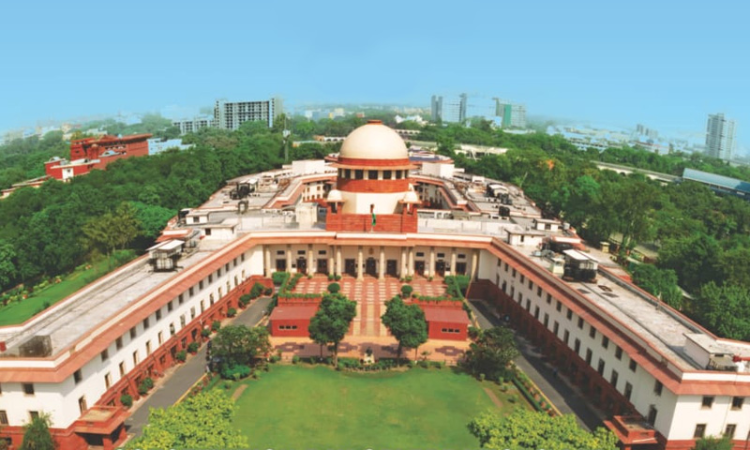Quantifiable Data On Reservation In Promotions
Sarthak Gupta
10 Feb 2022 5:34 PM IST

The recent judgement of the Supreme Court in Jarnail Singh v. Lachhmi Narain Gupta, Civil Appeal No. 629 of 2022 ("Jarnail Singh II") has once again turned the spotlight on one of the most emotive and volatile issues in India, that is, reservation for Scheduled Castes ("SCs") and Scheduled Tribes ("STs").
The case reached the Supreme Court on account of multiple High Courts striking down the policies of reservation in promotions for Scheduled Castes and Scheduled Tribes ("SCs and STs") framed by the Central and State Governments, on the basis of a 2006 judgement of a five-judge bench of the Supreme Court in M. Nagaraj v. Union of India, (2006) 8 SCC 212 ("M. Nagaraj"). The Supreme Court in M. Nagaraj had upheld the power of the Government, as enshrined in Article 16 (4A) of the Constitution of India, to provide for reservation in promotions. However, while doing so, it had laid down multiple pre-conditions on the exercise of such power, which are, the requirements of collecting "quantifiable data showing backwardness of the class and inadequacy of representation of that class in public employment", in addition to ensuring that the efficiency of administration was not compromised with. Though the requirement of collecting quantifiable data showing the backwardness of SCs and STs was done away with in the 2018 constitution bench judgement of the Supreme Court in Jarnail Singh v. Lachhmi Narain Gupta, (2018) 10 SCC 396 ("Jarnail Singh I"), the latter requirement of collecting quantifiable data showing the inadequacy of representation of SCs and STs in public employment still remained. It is on account of non-compliance of this pre-condition that multiple High Courts across the country had struck down policies of reservation in promotion framed by the Centre and States.
The recent judgement has further developed the jurisprudence on this pre-condition, clarifying multiple aspects of it on the asking of the Governments. As regards the yardstick to be applied for determining inadequacy of representation, the Court left the determination of such yardstick to the wisdom of the State Governments, as "the prevailing local conditions, which may require to be factored in, might not be uniform". A one-size-fits-all approach was thus rightly rejected. The Court further negated the suggestion of the Attorney General for India that the proportion of SCs and STs to the population of India should be the test for determining inadequacy of representation, again leaving it to the wisdom of the States to assess such inadequacy at their own level.
As regards the unit to be applied for the collection of quantifiable data, the Court held in categorical terms that such unit is to be the 'cadre'. It defined 'cadre' as "the grade/category of posts to which promotion is sought". It further distinguished 'cadres' from Classes/Groups such as Class I, Class II and so on, or Group A, Group B and so on, on the basis of which services, both at the Centre and States, are normally organized. As an example of separate 'cadres', the Court cited the posts of Director and Deputy Director, which may however, belong to the same Class/Group. It thus declared as bad law its 2019 judgement in B.K. Pavitra v. Union of India, (2019) 16 SCC 129 ("B.K. Pavitra II") which had approved the collection of quantifiable data on the basis of Groups and not 'cadres'.
Interestingly, the Supreme Court held that the data collected to determine adequacy of representation should be periodically reviewed, thereby introducing a requirement not there in M. Nagaraj, and thus ensuring that reservations, howsoever validly provided initially, do not become cast in stone. The Court, however, stopped short of laying down an exact period of review, again leaving it to the Governments to decide with the only caveat being that it should be "reasonable".
It thus appears that while Governments have the discretion in determining the test for adequacy or in deciding the time period of review, they have no discretion whatsoever in applying any unit other than a 'cadre' for the collection of data. At first glance, collecting data on the basis of 'cadres' may seem an uphill task for the concerned Government. For instance, as per the data submitted before the Supreme Court, the Central Government alone has around 30 lakh employees working in around 90 different Ministries/Departments, and as per the data received from 44 Ministries/Departments, there are about 3800 cadres existing in these 44 Ministries/Departments alone.
Daunting as these numbers may seem at first, one should not lose sight of the fact that it is the very same Government that conducted the Socio Economic and Caste Census 2011, enumerating not just a population of over 1.2 billion but also collecting information about their caste. Data-driven governance and IT solutions may further simplify the exercise of collecting data based on 'cadre'.
The author is an Advocate practising at the Punjab and Haryana High Court. Views are personal.


